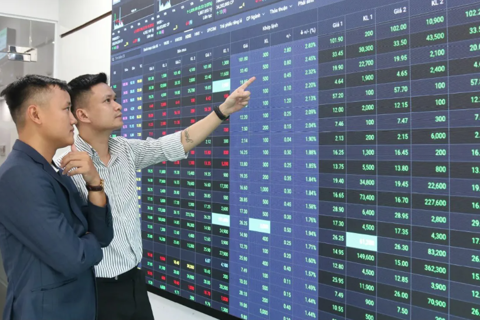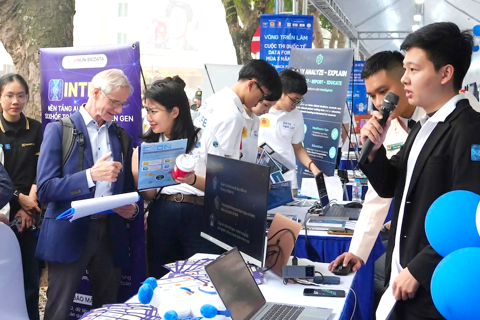Vietnamese banks restructure workforce as demand for digital hire grows
Driven by structural reforms and cost-efficiency goals, Vietnamese banks are streamlining their workforce, a trend expected to last through 2030, according to industry leaders.
THE HANOI TIMES — Vietnam’s banking sector is undergoing a major workforce transition as digital transformation accelerates.
While many banks cut staff to streamline operations, others expand their teams to meet the growing demand for technology-driven roles.

Eximbank is one of several Vietnamese banks expanding their teams to meet growing demand for technology-driven roles. File photo
According to the first quarter accounts of 27 listed banks, total employment in the industry fell by 0.7% to 277,000.
Several banks reported falls in staff numbers in the first quarter of this year (Q1).
LPBank recorded the largest staff reduction, shedding more than 1,600 employees in Q1, compared to the 600 layoffs in the last quarter of 2024, leaving its total headcount at 9,570.
Sacombank had the second largest reduction, cutting 930 jobs to around 16,100. The bank's chairman, Duong Cong Minh, said that the bank began streamlining its workforce last year and will continue this year and next at traditional branches while increasing digital transactions.
VIB and TPBank also scaled back their workforce, with VIB trimming its payroll by 4%, which corresponds to around 500 employees, and TPBank reducing its headcount by almost 130 to around 7,750 employees.
Other banks made smaller cuts with ACB slashing 75 employees, SeABank cutting 25, and ABBank reducing its workforce by 11.
Among the state-owned banks, Vietcombank was the only one to record a staff reduction, cutting only 10 employees to record its staff at 23,528 employees at the end of March.
Downsizing was mostly seen at mid-level positions. ABBank said that it reduced management layers, reassigned business units, and trimmed certain departments by 30% to 40%.
Similarly, TPBank's strategy this year is to leverage technology and streamline operations by eliminating layers of middle management. The bank is also reviewing low-productivity units and underperforming staff, while improving new hires.
Banks still expand tech hiring amid digital shift

HDBank and other banks such as Eximbank, OCB, and VPBank are also streamlining their internal operations and structures. Photo: Archive
According to a recent survey by the State Bank of Vietnam, the employment outlook in the finance and banking sector in Q1 improved compared to the last quarter of 2024. However, the recovery remains below expectations. Over 32% of credit institutions reported new hires in the period.
Despite headcount streamlining driven by digital transformation, several banks expanded their teams between January and March. Not all banks adopting new technologies are shedding staff. Some are improving staffing to support growth and digital innovation.
In the same period, Techcombank hired 300 new employees, bringing the total staff to 11,282. The bank continues to lead the industry in average staff income, with monthly salaries averaging VND42 million (US$1,618). At its annual general meeting in late April, the bank said around 14% of its staff now work in information technology, data, and digital operations.
MB Bank is also expanding its staff. The bank announced plans to increase its workforce for 2025 by between 25% and 35% in preparation for scaling up its operations to 2.5 times its current size. Its leadership has said that cutting jobs aims to boost labor productivity and offer a better customer experience.
Several other private banks, including Eximbank, OCB, HDBank, and VPBank, are also streamlining their internal operations and structures.
Among the state-owned lenders, BIDV had the highest number of new hires, with more than 250 new employees, bringing its total number of employees to more than 26,300, second only to Agribank, in Q1.
The State Bank of Vietnam projects a positive employment outlook in the banking sector for the second quarter and the rest of the year. Almost half of credit institutions have plans to hire, while less than 25% expect to reduce staff.
In the long term, banking executives predicted that workforce rationalization is likely to continue until at least 2030. However, demand for positions related to technology, data, artificial intelligence, and cybersecurity will remain strong.
For more traditional roles, such as cashiers, banks will set higher standards for the skills and qualifications required. These employees will be expected to take on broader responsibilities, including cross-selling products, providing digital advice, and helping customers optimize their cash flow, effectively acting as financial consultants.











